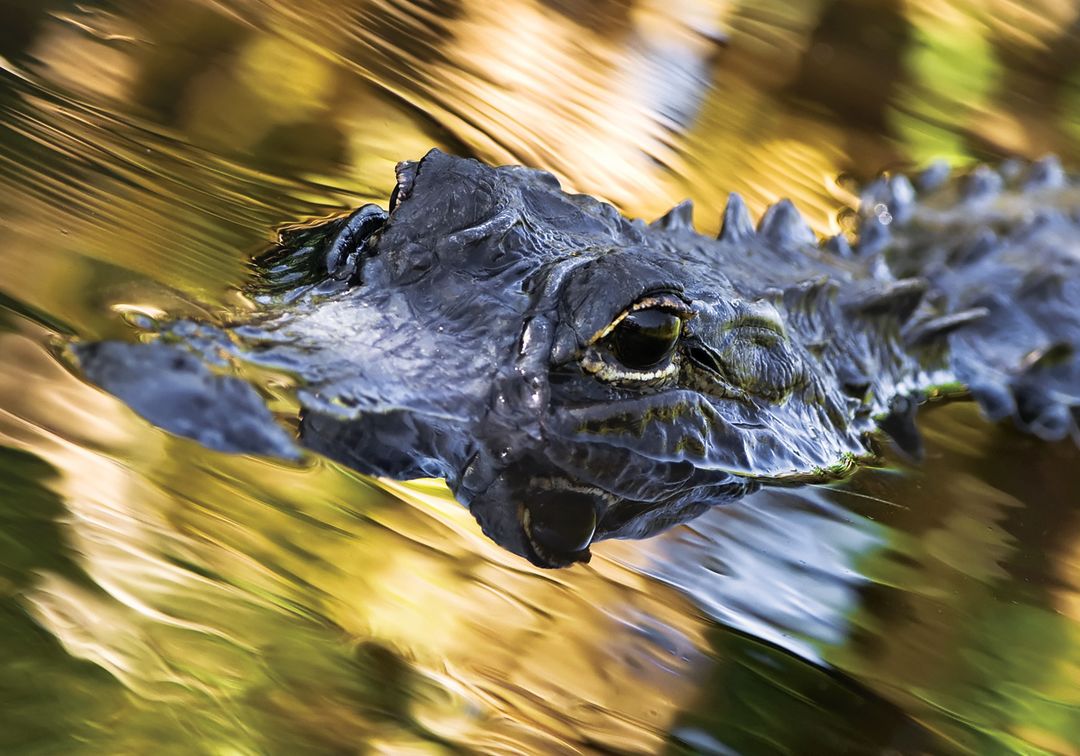Deep Hole is Home to Hundreds of Alligators

Thousands of alligators inhabit the park's river and lakes.
Image: Shutterstock
In her book Myakka, retired park ranger Paula Benshoff recalls wading into the river to trim some bushes to provide a better view for a photograph. The branches splashed as they hit the water, and Benshoff realized the noise might sound like a wading deer to nearby alligators. She stepped back and scanned the river—no alligators in sight. She leaned forward to lop off another branch—and saw a 12-foot alligator between her legs, staring up at her with bulging eyes.
She screamed—and immediately remembered that an expert had warned her never to scream if threatened by an alligator, because she’d sound like an animal in distress, ideal prey for the alligator. Benshoff raised the clippers high above her head, making herself look as large and threatening as possible, and shouted at the alligator. It stared at her a moment, then bolted back into the river.
The incident, Benshoff explains, illustrates the nature of an alligator attack. Alligators silently approach, hidden from view, then strike, snatch and submerge their prey. Attacks take place in or near the water—seldom on land. But there’s only one officially recorded attack in the park’s history, she says. And—although she rarely admits this—“It was me!” When Benshoff and another ranger were removing invasive species, she stepped on the head of an eight-foot alligator, which snapped down on her leg and then swam away. But Benshoff, who still bears the toothmarks, says it was more embarrassing than terrifying, and she insists, “It wasn’t the alligator’s fault.”
With brains so tiny they lack any ability to think, alligators operate on instinct and are brilliantly engineered for their environment. They can survive months without food and hours without air, and their bodies are efficient diving and swimming machines. Thousands of them thrive in the lake, rivers and wetlands of Myakka. And although we think of them as alpha predators, small alligators are also prey themselves, snapped up by fish, birds, snakes, raccoons and larger alligators, making them an essential link in the food chain.
It’s easy to spot these mysterious, menacing creatures on a visit to Myakka—from bridges, while fishing or on the airboat tour. But for the ultimate alligator experience, sign up for a five-mile roundtrip hike to Deep Hole, a sinkhole on the edge of the Lower Myakka Lake. From December to May, park waters dry up, and the sinkhole is one of the few places offering deep water and abundant food to alligators. In especially dry years, more than 100 alligators may crowd around the small sinkhole. The sight always elicits gasps, and newspapers around the world love to run images of the strange and savage Florida wilderness overrun by giant, prehistoric reptiles. Only 30 permits a day are issued to visit the wilderness area that includes Deep Hole; call (941) 361-6511 for details.



